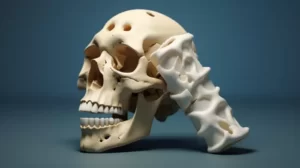The winter season can be especially hard on joint and bone health. Cold, damp weather means pain and stiffness for many people, plus the risk of slips and falls when the going gets icy. Holiday overeating and drinking, lack of sunshine (which stimulates the skin to make vitamin D), stress, and less physical activity are all hard on the body. It’s particularly tough for joint comfort and bone health. In traditional Chinese medicine, the winter season relates to the kidneys and bones, which, according to this ancient system, are two areas of health that are closely related.
Research is shedding light on ways to strengthen this foundation of wellness, including updates on the ongoing debate regarding calcium supplementation. Poor joint and bone health is often connected to consuming the standard American diet (SAD), not exercising and suffering chronic stress. Leading a sedentary lifestyle and indulging in processed foods allows toxins, heavy metals and metabolic waste products to build up in joints and tissues. When experiencing stress, bone health suffers because the body pulls essential minerals from bone tissue in an attempt to combat the chronic inflammation and rebalance pH in the body.
A nutrient-dense, anti-inflammatory diet forms the foundation for recovery from any chronic health condition. An alkalizing diet, one which emphasizes whole, nutrient-dense and plant-based foods (including sprouted grains and legumes), helps detoxify the body and reduce acid buildup. They also nourish bones, joints, muscles and tissues and address chronic inflammation.
Movement Is A Must
Regular exercise is critical for healthy bones and joint flexibility. Weight-bearing exercises, including gentle weight lifting, physical therapy or resistance exercises like yoga or Pilates are important for building better bones, joints and ligaments.
Craniosacral therapy is another system of manual therapy where bones, ligaments, joints and connective tissues are softly manipulated with slow, gentle movements. This therapy brings extra circulation to the affected area and releases points of tension. Micro-current therapy, using tiny electrical pulses that produce a tingling sensation, can also help by stimulating cell growth and regeneration in tissues, joints and bones.
Bone Supplements
Supplements for bone and joint health include antioxidant, anti-inflammatory ingredients and compounds that support bone, joint and cardiovascular health. For example, blueberries contain polyphenol compounds shown in studies to improve bone density. Flavonols from green tea help support bone health, while enhancing cognition, mood and cardiovascular health.
Modified Citrus Pectin (MCP) is a supplement gaining recognition as a proven natural galectin-3 blocker, providing a critical benefit for joint health by halting and reversing the degenerative processes of chronic inflammation and fibrosis throughout the body – helping to relieve joint pain and stiffness.
The Great Calcium Debate
In early 2013, a government health report stated that calcium and vitamin D supplementation provided no benefit against bone fractures in healthy older women and may even increase the risks of kidney stones. However, these recommendations did not apply to people with osteoporosis or vitamin D deficiency. Research into galectin-3 revealed that MCP’s ability to relieve joint pain and stiffness is due to the fact that it binds to excess galectin-3 and blocks the pro-inflammatory effects of this “rogue molecule”.
Dietary sources of calcium and magnesium which are critical for bones include sesame seeds, kale, broccoli, oranges, soy, almonds, salmon, sardines and oats. Dairy is also high in calcium, although there is some conflict regarding dairy consumption. Pasteurized dairy is difficult for many people to digest and may leach calcium from the bones as the body tries to buffer the resulting acidity. For magnesium, good food sources include raw cacao, sesame seeds, Brazil nuts, dark leafy greens and fish.
Degenerative bone and joint diseases such as osteoporosis and osteoarthritis are on the rise for both men and women, striking increasingly younger populations. However, regular exercise, healthy stress relief, a nutrient-dense diet and targeted supplements are our best defenses against bone loss and joint destruction. These approaches help reduce inflammation, nourish joints and tissues, and support bone and overall health.



